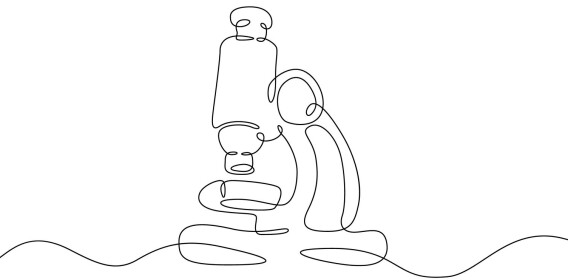
Brain researcher warns against touchscreens in cars:
"It's actually impossible to have two thoughts in your head at the same time"
The increasing trend of moving more car functions onto screens concerns Kenneth Hugdahl.
Touchscreens in cars demand significant attention from the driver.
A new study shows that attention is diverted from the road for 16 seconds when entering an address into the car's navigation system.
Those designing the interiors of new cars, where more and more functions are shifted to screens, do not consider how our brain works. This was recently stated by Professor Emeritus of Biological Psychology Kenneth Hugdahl at the Norwegian Brain Health Conference 2024.
The brain processes information sequentially
Our brain does not process information in parallel. It handles information one step at a time, the brain researcher explains.
This means the phrase 'having two thoughts at once' is inaccurate. In reality, it is impossible to focus your attention on both the traffic and the screen simultaneously.
"A split second is all it takes to end up in a disastrous situation," says Hugdahl.
Participants asked to complete tasks on the screen
SINTEF and Nord University conducted the new study commissioned by the Norwegian Council for Road Safety.
The researchers assessed how long it takes to complete tasks on a touchscreen while driving.
Using a camera, they recorded eye movements and attention distribution in 44 drivers who used a touchscreen while driving.
Test participants were asked to complete tasks using the touchscreen.
The study found that entering an address while driving and searching for a music channel were the most demanding tasks.
Driving blind
Among the tasks drivers were asked to complete were adjusting the temperature, finding music, switching radio channels, and using the navigation system.
Entering an address into the navigation system proved the most demanding task, with drivers spending an average of 16 seconds on it.
Searching for music also took significant attention, with an average of 10 seconds.
"When you take your eyes off the road, you're essentially driving blind. The longer the task takes, the longer you're effectively driving with your eyes closed," says Ann-Helen Hansen at the Norwegian Council for Road Safety.
Few studies examine how screen use impacts a driver’s attention, and many have significant limitations, like small sample sizes, explains Kjell Vegard Weyde. He is a researcher at the Institute of Transport Economics (TØI).
Research supports findings
Existing studies support the idea that using screens in cars can negatively impact attention.
TØI conducted a study where participants wore eye-tracking glasses while performing screen-based tasks, such as adjusting the temperature and front fan. They also completed more complex tasks on the screen.
"All participants looked away for at least two consecutive seconds on at least one occasion," he says.

This was also true for simple tasks, such as adjusting the temperature and front fan.
Previous research has shown that looking away from the road for more than two seconds doubles the risk of near-miss or crash situations, says Weyde.
"In our pilot study, several participants found it difficult to know if their action on the screen was completed. They had to double-check for confirmation,” he says.
Shifting attention is challenging
The trend of moving more car functions to screens worries brain researcher Kenneth Hugdahl.
“This is especially consequential for older people,” he says.
It is not necessarily that older people are unable to use these functions, but it takes longer.
"It takes us longer to shift our attention from the screen back to the road situation, and we also need more time to control motor functions. That time could be crucial if, for example, a child were to run out into the road," he says.
"What would you advise older people who are buying a new car to pay special attention to?"
"At the risk of Elon Musk taking issue with me, I would say: Think carefully before choosing a Tesla as your first electric car. They have gone the furthest in redesigning car functions," he says.
Learned habits
The switch to screen-based controls is not the only factor that can create distractions. Moving traditional functions to different locations can also disrupt attention, Hugdahl believes.
In Tesla's latest models, the traditional turn signal lever has been removed and replaced with buttons on the steering wheel.
This taps into the importance of learned habits, explains the brain researcher.
"We're very used to turn signals being on a lever. Changing something so ingrained takes time to adjust to, especially for older drivers,” he says.
Hugdahl believes older people are often overlooked in new product designs.
"Younger people, who grew up with digital screens, have an easier time shifting focus between traffic and the screen. But this ability declines with age. It will be interesting to see if they can still handle screens in traffic as they grow older,” he says.
Reduced focus
Kjell Vegard Weyde from TØI confirms that research suggests older drivers tend to use more mental capacity to navigate the car's screen than younger drivers.
He notes that cars are increasingly equipped with advanced driver assistance systems, like adaptive cruise control (ACC), which automatically adjusts the car's speed to maintain a safe distance from the car in front.
Many new cars also include lane keeping assistance, which can actively correct steering to help drivers stay in their lane.
Weyde believes that when used correctly, these systems have the potential to improve traffic safety.
"But there's research indicating that some people may place too much trust in these advanced systems. They assume the car is taking care of much of the driving, allowing them to focus more on other tasks unrelated to driving, like using the touchscreen," he says.
More screen attention
As driving becomes more automated, the likelihood of reduced driver attention seems to rise. Studies have explored this directly, Weyde explains.
In one experiment, researchers monitored where participants looked while driving both with and without adaptive cruise control.
The findings reveal that drivers spent more time and longer intervals looking at the car’s screen when using ACC than when driving without it.
———
Translated by Alette Bjordal Gjellesvik
Read the Norwegian version of this article on forskning.no
Related content:

Subscribe to our newsletter
The latest news from Science Norway, sent twice a week and completely free.





































